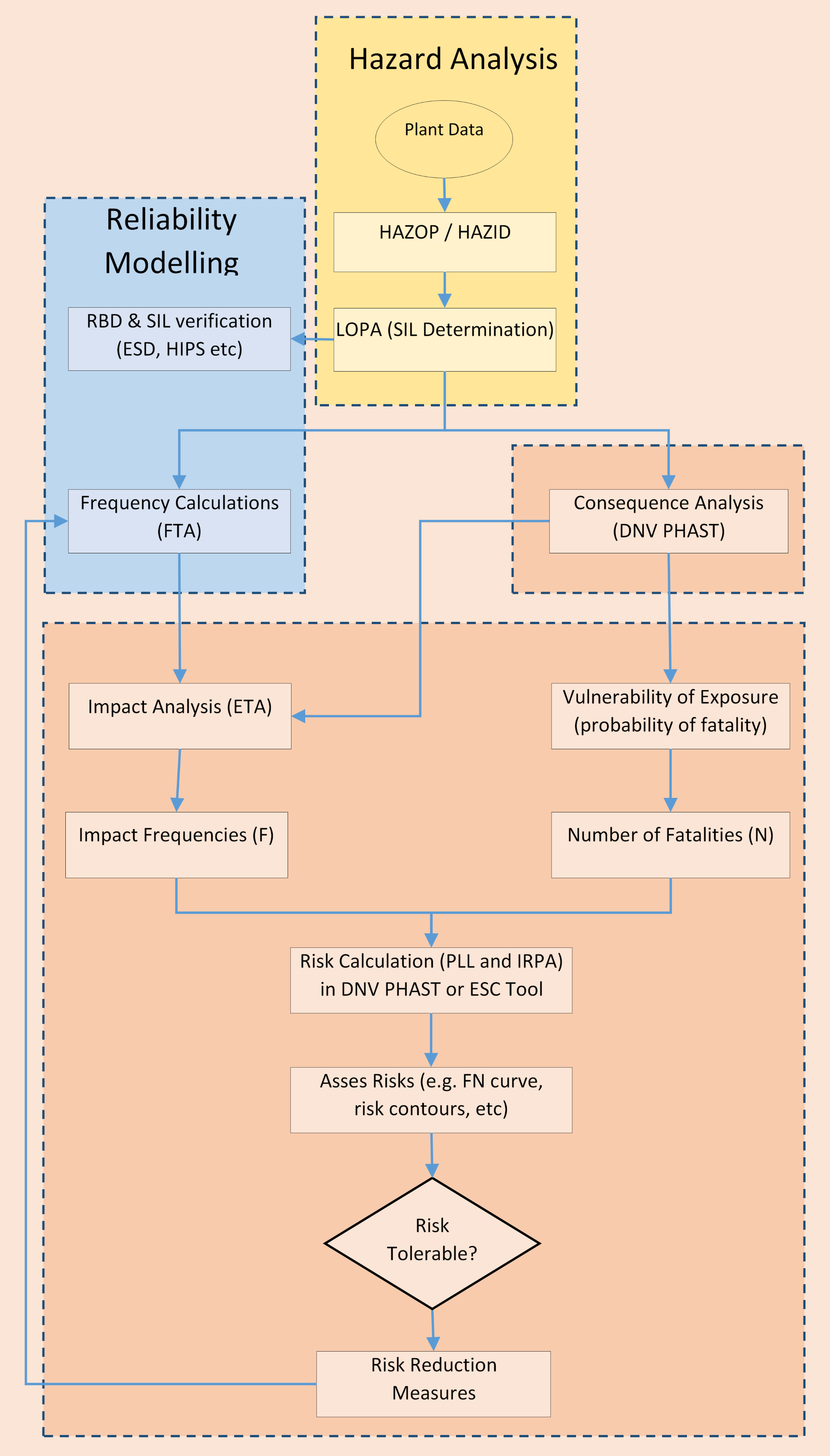
A Quantitative Risk Assessment (QRA) is a formal and systematic risk analysis approach to quantifying the risks associated with the operation of an engineering process. A QRA is an essential tool to support the understanding of the exposure of risk to employees, the environment, company assets, and its reputation. A QRA also helps to make cost-effective decisions and manages the risks for the entire asset lifecycle.
QRA Process

Objectives for a QRA study
- To identify the hazards associated with a facility
- To determine the potential frequencies and consequences of the identified hazards
- To determine the system availability of the protection systems
- To quantify the risks associated with a facility (e.g. Risk Contours, Individual Risk Per Annum (IRPA), Potential Loss of Life (PLL) and F-N Plots)
QRA Consultants
A typical QRA study conducted by one of ESC’s range of QRA Consultants consists of the following processes:
- A HAZOP study to identify a series of hazardous scenarios that could lead to significant adverse consequences
- A SIL Determination study, typically done using the Layers of Protection Analysis (LOPA) method
- A Fault Tree Analysis (FTA) to determine the event frequencies associated with the hazardous scenarios from the HAZOP and LOPA study
- A consequence analysis to determine the consequences of the hazardous release from a facility (including flammable, explosion, and toxic). The consequence analysis is carried out with the use of the Det Norske Veritas (DNV) Process Hazard Analysis Software Tool (PHAST) software
- An Impact Analysis to determine the frequency of a specific hazardous impact using Event Tree Analysis (ETA). ETAs are ‘bottom up’ analytical tree diagrams that determine the overall likelihood of a particular impact following a hazardous release (i.e. Jet Fire, Flash Fire Vapour Cloud Explosion (VCE))
- A Risk Assessment was conducted using DNV PHAST Risk software to determine the risks associated with hazardous scenarios
- Risk Reduction Measures to identify the options to reduce or mitigate the risks
- Lifecycle Cost Analysis to provide a Cost Benefit Analysis (CBA) based on different risk mitigation measures
